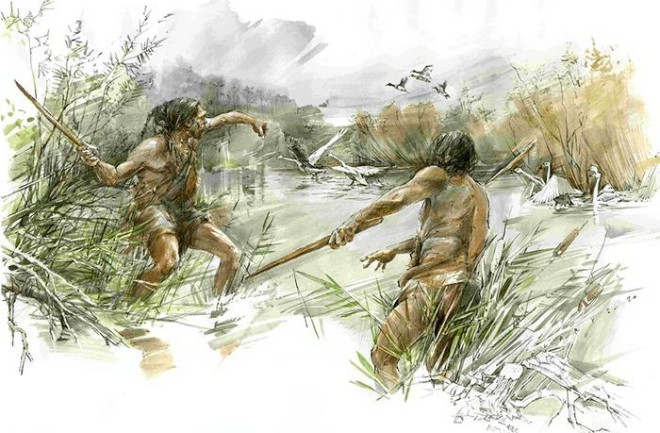In this testimonial from a bygone era, we are transported back some 300,000 years to an intriguing discovery. Picture an early hunter, going about their daily activities and inadvertently leaving behind a stick, lodged deep into the wet mud. Astonishingly, this stick managed to withstand the test of time, surviving the Last Ice Age, two world wars, and the advent of the internet. While it did sustain some damage from fungi and roots, its condition remains surprisingly intact.
Recent research has shed light on the stick’s purpose – it was once utilized as a hunting weapon, thrown into the air much like a boomerang. Delve deeper into the annals of ancient craftsmanship and you will find skilled artisans who demonstrated remarkable expertise in preparing and refining this piece of wood. Expert archaeologist Dirk Leder explains the intricate process involved: removing the bark, carving it into an aerodynamically sound shape, further refining the surface, treating the wood to prevent cracking and warping, and finally, sanding it for improved handling. These ancient woodworkers, most likely Neanderthals or another early human species, meticulously stripped away any knots present on the spruce branch. Interestingly, the growth rings on the branch indicated unfavorable growth conditions, as the craftsmen transitioned from a warmer interglacial period to a new glacial one with plummeting temperatures.
This peculiar finding intrigued archaeologists since the stick’s initial discovery back in 1994. It wasn’t until they stumbled upon a similar tool that they began to consider its significance. While stone tools from ancient times have been extensively studied, wooden tools remain somewhat of a mystery. However, these wooden artifacts have proven invaluable in unveiling secrets from ancient societies. As Annemieke Milks, an archaeologist from the University of Reading, asserts, “Discoveries of wooden tools have revolutionized our understanding of early human behaviors.” The astonishing revelation is that our ancestors possessed a remarkable ability to plan ahead, a comprehensive knowledge of wood properties, and a repertoire of sophisticated woodworking techniques that continue to be relevant today.
In the quest for further understanding, archaeologists turned their attention to a lakeside site near Schöningen, Germany. Here, they uncovered not only the aforementioned stick, but also several other spears and sharpened sticks. Together, these findings represent the earliest evidence of large-scale production of wooden tools by humans. The implications of this discovery are profound, shedding light on our ancestors’ resourcefulness and skillful adaptation to their environment.
The study suggests that the stick was primarily employed in hunting medium-sized game such as red or roe deer, or even small, agile animals like hares and birds. The stick’s impact-based hunting method, combined with the presence of darkened areas on its points, suggests that it may have been successful in piercing through and inflicting damage, possibly producing blood or fat residue as a result. In addition, the stick may have served as a toy spear for children, a practice observed in other hunter-gatherer societies. As a scaled-down version of the adult weapon, it would have facilitated children in honing their skills and participating in hunting activities. It is worth noting, however, that the curvature of the stick does not match that of the spears discovered at the site, adding another layer of intrigue and curiosity to this ancient mystery.
In conclusion, this extraordinary discovery transports us back in time, providing insight into the resourcefulness and ingenuity of our ancient ancestors. It reminds us that even in the distant past, humans possessed the ability to plan ahead and adapt to their surroundings. The stick, once a simple tool for hunting, now serves as a testimony to the incredible craftsmanship and knowledge of our forebearers.
